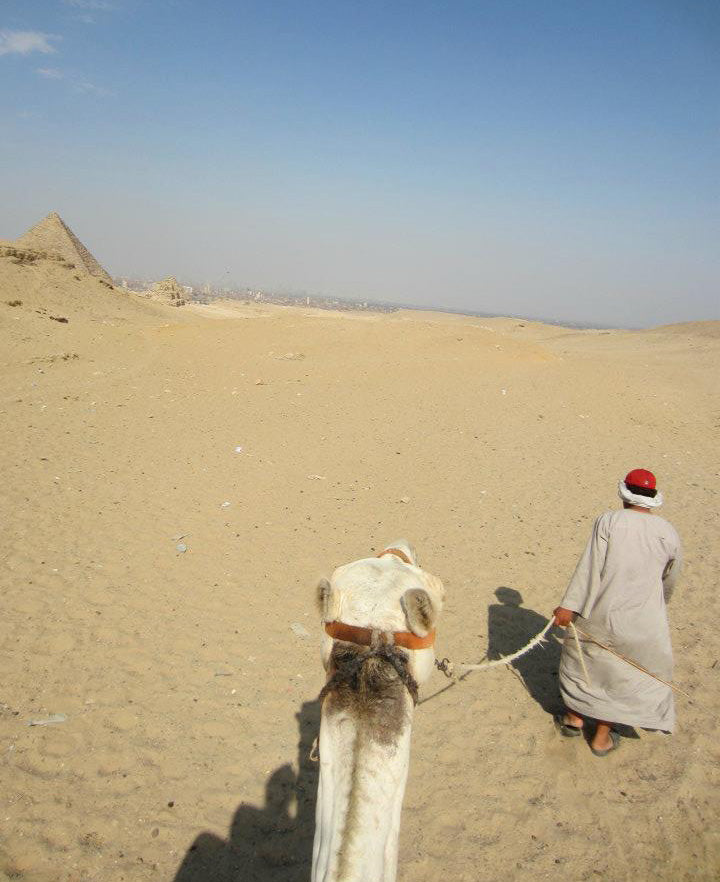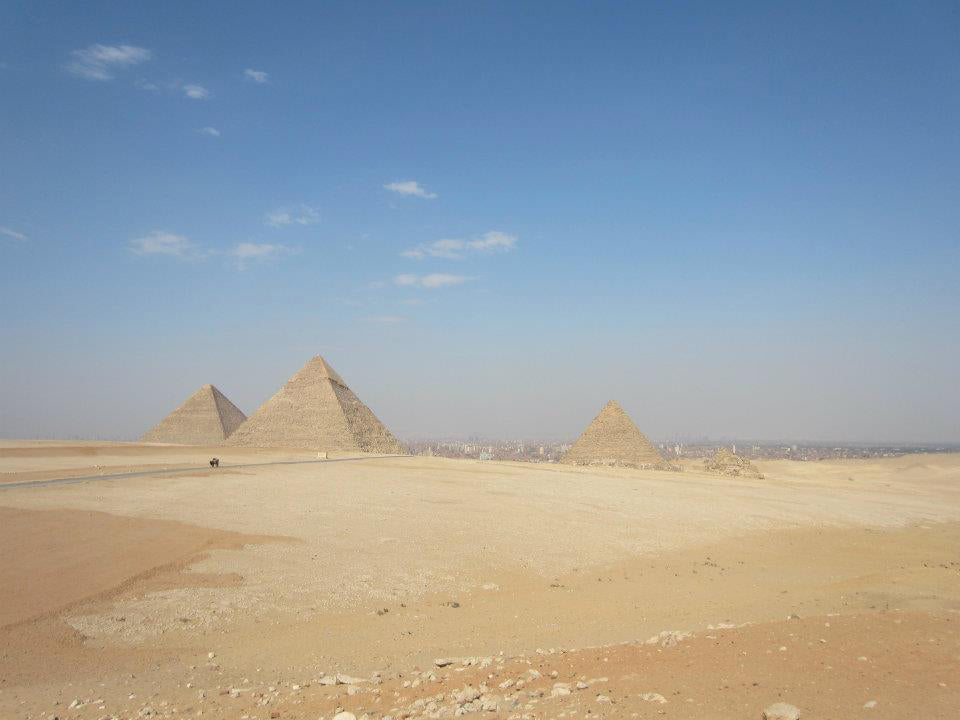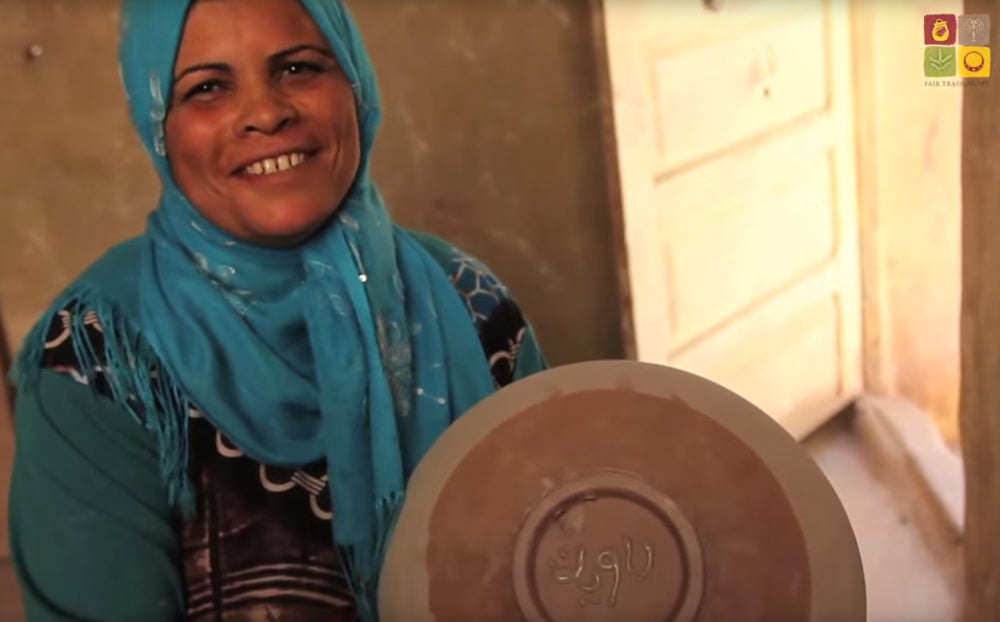
From Egypt, With Love
Egypt. There are cities that never sleep. Thriving markets fit to impress even the most particular shopper.

Ancient temples dominate the landscape, full of a history so deep that looking back takes us to the very beginnings of civilization. Arid deserts whose dunes hide countless secrets beneath their depths create an iconic landscape.
Just a few hours’ drive south of Cairo is an expanse of desert so quintessential to Egyptian culture, it was named a UNESCO World Heritage Site. Wadi El Hitan is a sea of sand that is gently wearing away the massive limestone formations that are scattered as far as the eye can see. Ruins and artifacts are everywhere, and the silence is so complete that you can’t believe you are only a short distance from the noise and urgency of Cairo. A few brave tourists can be found camping beneath the stars this time of year, enjoying that feeling of peace that comes only when you leave civilization far behind.

The farther from the Nile, the more dusty and monochromatic things become. But bordering the harsh Wadi El Hitan desert to the North is the cool, lush oasis of Al-Fayoum. It has been a much needed escape from the dusty dunes and the noise of the city since prehistory. Seeing the potential of the low-lying area early on, pharaohs built an irrigation system to harness the Nile’s seasonal floods for agriculture. Pleasure palaces were constructed here eons ago to better appreciate the soft breezes and cool air, and to observe the migratory birds and crocodiles in Lake Qarun. Fields that are nourished by mud from the Nile are overflowing with grain. Gardens are thick with figs, grapes, and roses that envelop you in the sweet, tenacious scent of growth that has taken root in the midst of lifelessness. It’s a beautiful place with hospitable people and picturesque villages on the coast of an ancient lake.
One village in particular, Tunis, has a reputation for attracting artists. It is a charming example of Egyptian village life, complete with dusty dirt roads, horse-drawn carts, and palms swaying in the evening breezes. The mosque’s call to prayer wakes you at dawn, and the birds coming in to roost near the lake at sunset signal the end of the day. Children laugh together as they chase each other down narrow streets, gleefully avoiding their chores.
Here, life slows down. Men sit outside corner cafés, smoking hookah and sipping carefully on small cups of strong coffee. There is time to create, time to imagine, time to observe the world around you. It’s easy to see why the oasis and its villages have held Egypt’s attention for so many centuries. Discovered by two Egyptian poets in the 1960’s, Tunis has maintained its penchant for creativity over the decades by encouraging artists, writers, and makers from all over Egypt and beyond to settle there. And they have. Mud brick houses fill the streets, and have been turned into workshops and studios. Tunis is the home of the Fayoum Art Center a thriving museum and gallery where numerous art shows take place throughout the year. However, pottery is what the village is famous for. There is an annual pottery show, as well as a pottery school and ten different studios. This love of pottery is mainly thanks to Evelyne Porret, a Swiss potter that found her way to Tunis is the 1980’s. She was the first potter in the village, and trained many students in the craft.
As Evelyne trained students, a 12 year old girl named Rawiya was watching closely, dreaming of running a pottery studio of her own. All the village boys told her that she could never succeed because, in their village, girls did not have the same opportunities as boys. But this discouragement only fueled her drive to succeed, and she soon became Evelyne’s apprentice.
Rawiya was the first Egyptian woman to learn pottery and open a studio in the village of Tunis. The space is just a square room with simple shelves along the walls, set up to display works of ceramic art. This humble room is more significant than it appears because it represents the empowerment of women in Fayoum. The walk to her ceramics studio is a joyful one. Sunlight casts shadows between palm leaves, rustling with every breeze. Songbirds fill the air with sound. Rawiya earned this walk.
Something as simple as a bowl, made to serve a practical purpose, is elevated by a creative mind and becomes a work of fine art. A three-dimensional design is achieved by scrawling a pattern of liquid clay. With almost trancelike concentration, Rawiya’s hand moves, and a design emerges. A colored glaze completes the look. The knowledge that she shares provides valuable employment opportunities to people in her community. And every clay bowl is a treasured work of art.
Today, she uses her skills to train others, including her younger brothers, who have since opened their own workshop, and have started teaching her own children.
Egypt has a long, illustrious record of innovation and artistic achievement. Egyptian artifacts have been spread all over the world, and their ancient designs copied and reused in cultures oceans away. Theirs is a rich history of craftsmanship. Rawiya is proud, and rightfully so, that she has continued this tradition and mastered her craft. We are proud that we have the chance to introduce her work, and a small piece of Egypt, to you.






Leave a comment